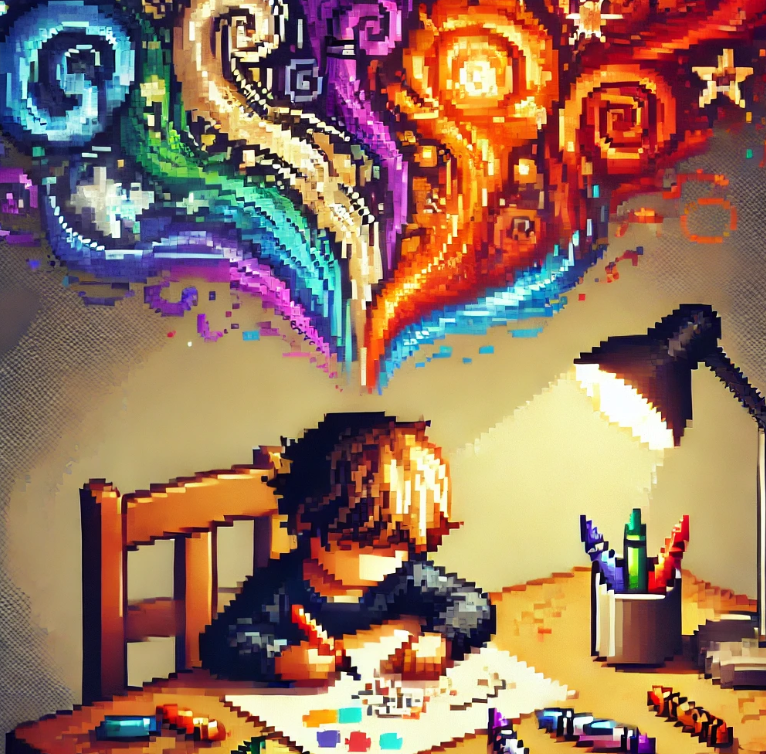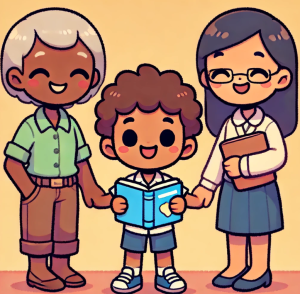
How Parental Involvement Shapes Student Imagination
“The true sign of intelligence is not knowledge, but imagination.” – Albert Einstein.
When it comes to fostering creativity in students, this statement holds more relevance than ever. Creativity—our capacity to generate novel ideas and solve problems in innovative ways—has become one of the most vital skills for success in the 21st century. But here’s a question for parents and educators alike: how much influence does parental involvement have in shaping a child’s creativity? And more importantly, what kind of involvement makes a difference?
Recent research gives us fascinating insights into these questions, showing that not all types of parental involvement are equal. Let’s explore what the science says about fostering creativity in students and what this means for parents, teachers, and mental health professionals who are working to support student well-being.
Parental Involvement: The Creativity Connection
A systematic meta-analysis of 30 studies, including over 20,000 students, sheds new light on the connection between parental involvement and creativity. The findings revealed that while parental involvement has an overall positive impact on student creativity, the type of involvement is critical. Specifically, the study identified four types of involvement—autonomy support, behavioral control, content support, and psychological control—that each affect creativity in different ways.
Parents who encouraged autonomy and problem-solving had children with higher levels of creativity. On the other hand, parents who imposed psychological control—using tactics like guilt or withdrawing affection—actually hindered their child’s creative potential. In other words, being involved in a child’s development is not enough; how you are involved matters a great deal.
Fostering Independence Sparks Creativity
Imagine a parent encouraging their child to figure out how to build a bridge with toy blocks. Rather than stepping in with solutions, they offer gentle prompts like, “What do you think would happen if you stacked them this way?” This is an example of autonomy support, a type of involvement where parents allow children to take the lead in solving problems.
The research showed that parental autonomy support had the strongest positive correlation with creativity (r=0.144). This approach fosters a child’s confidence in their own decision-making abilities, which in turn fuels creative thinking. In everyday terms, autonomy support teaches children how to explore and experiment—a core element of creativity.
For parents, this might look like giving children the freedom to choose their after-school activities, make decisions on projects, or even work through challenges on their own with minimal guidance. By creating an environment where children feel empowered to think and act independently, you’re laying the groundwork for creative growth.
Balancing Behavioral Control
While autonomy support helps creativity flourish, another finding from the meta-analysis suggests that some degree of structure and rules—referred to as behavioral control—can also be beneficial (r=0.133). Setting clear expectations and boundaries helps children develop problem-solving skills that foster their creativity.
However, the key is balance. Behavioral control should be about guidance, not restriction. For instance, encouraging children to complete their homework in a timely manner while allowing them the freedom to choose how they approach it nurtures their creative process while still maintaining discipline.
The Dark Side of Psychological Control
Now, what happens when parents try to control their children’s thoughts and emotions through psychological pressure? According to the research, this type of involvement can actually decrease creativity (r=-0.117). Psychological control involves tactics like guilt-tripping, emotional manipulation, or conditional love—essentially saying, “Do this, or I won’t be happy with you.”
Such practices create an environment of fear and inhibition, stifling the child’s natural curiosity and willingness to take risks. Creativity thrives in environments where children feel safe making mistakes and learning from them. Psychological control, on the other hand, fosters a fear of failure, leading to less creative exploration.
Real-World Implications: Why This Matters for Parents and Schools
These findings have important real-world implications for parents, educators, and school mental health professionals. With student mental health becoming an increasingly significant concern, fostering creativity is one way to enhance overall well-being. Creativity is linked not only to academic success but also to resilience, problem-solving abilities, and emotional intelligence—skills that are critical for navigating life’s challenges.
For parents, the takeaway is clear: support your child’s independence, but provide structure where needed. Avoid psychological control and instead create an environment where curiosity and exploration are encouraged. Simple actions—like asking open-ended questions, allowing kids to try things their way, and resisting the urge to step in with all the answers—can significantly influence your child’s creative development.
For educators and mental health professionals, these insights can guide how you support students and parents. Encouraging parental involvement in school activities—especially those that promote autonomy and creative problem-solving—can enhance not only academic performance but also emotional and social well-being. When schools and families work together to support creativity, students are better equipped to handle the complexities of the modern world.
Creating Space for Creativity at School and Home
The findings suggest that fostering creativity is about finding a balance between guidance and freedom. Here are a few practical ways to create an environment that nurtures creativity both at home and in the classroom:
- Encourage curiosity: When children ask “why,” respond with questions that push their thinking even further. This builds their ability to explore ideas deeply.
- Offer choices: Giving children options—whether in homework, activities, or problem-solving methods—helps them develop decision-making skills crucial for creative thinking.
- Praise effort, not results: Focus on the process of trying and experimenting rather than the end product. This encourages risk-taking without fear of failure.
- Avoid over-scheduling: Leave room for unstructured play or free time. Creativity often flourishes in boredom, where the mind is free to wander and innovate.
Conclusion
Creativity is not just an inborn trait; it’s a skill that can be nurtured—and parental involvement plays a key role in this process. The findings of this meta-analysis suggest that parents who balance autonomy with supportive guidance while avoiding psychological control provide the best environment for their children’s creative development.
As a parent or educator, how are you encouraging creativity in the children around you? Are there ways you can adjust your involvement to foster more independent thinking and problem-solving?
Join the Educational Revolution!
Begin your adventure with This Week in School Psychology for only $5 a month or $50 annually. Be at the forefront of educational breakthroughs and mental health insights. Subscribe to become a beacon of knowledge in your community, simplifying the complex world of educational research. Why wait? Ignite your passion for learning today and enjoy exclusive savings with our annual plan!



